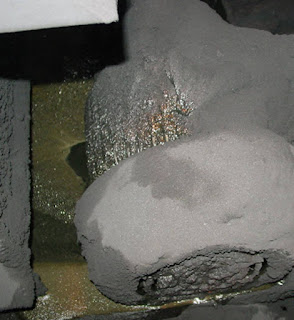Many of us are becoming more and more dependent on the internet to manage many parts of our lives, however some of our reliability peers and brethren still have not embraced the power of the web. So, I though I would share 5 great places to start improving your reliability with Al Gore's incredible invention, the Internet.
Five things reliability folks should use on the internet:
#1 Google
Google is the most obvious tool but also the most powerful, it can provide access to any one of the following:
Vendor websites
Old pdf vendors manuals and sales literature with specifications
Common problem with equipment in the form of articles from publications, blogs, bulletin boards, and historical sites
Spare parts for obsolete equipment
Special tools
New technologies
The key here is to search different combinations of words because not everyone calls a piece of equipment or technology by the same name. You know, it is the old grease zerk, fitting, nipple issue that has plagued CMMS users for years.
I will be facilitating a root cause analysis tomorrow and the first step in that process for me is to google the equipment manufacture as well as the product and a list of common failures of that equipment. Sometimes I am amazed by what is already out there on the web that I can use not to prejudge the root cause but to improve my understanding of anything from design operating context to expectations for maintenance and known weak design points.
#2 Wikipedia
Wikipedia is my go to site for information about
companies,
product,
equipment,
industries, and
concepts. You can click on each linked word above to see an actual example.
Say you are curious about
Monte Carlo Simulations (if you are just click), quickly you can see a definition, details, and many times even examples of how to use the tool. The one point to remember is that it is all crowd sourced, meaning that the "facts" come from many people and are reviewed regularly but it can still have some inaccuracies.
#3 LinkedIn
LinkedIn is where you can connect with many different people from your and other industries. It is a networking site for professionals and a great place to get answers to questions from others in similar situations. On LinkedIn I find both the
Groups and
Answers section extremely useful.
Groups is where you can find a congregation of folks who are interested in the same topic, or company, or discipline and you join them in this interest. You can pose questions to the members of the group or just read their post and learn from their questions and thoughts. The
Answers section, which you can find under the
more button in the header menu, is a great place to go to ask a question of a larger audience. Your questions can be sent out to more than just a group, it can be sent out to everyone who has interest in the topic you select. This can be thousands of people. You can also address the question just to your network of connections depending on what your needs are. If you send it out to everyone on a topic then you will be amazed how quickly people will respond with great answers and along the way you may make some great new connections.
#4 Ebay
While everyone knows you can buy clothes or toys or cameras or cars most people do not realize you can buy industrial equipment and parts. I find myself sometime searching specifically for obsolete items to keep an old unit running late in its product life cycle.
Here is a link to the business section where you will see list of item that you may have been looking for for quite some time. You may find the one switch you need to keep that one original widget machine running that you can not get the capital to replace.
#5 Twitter
Twitter, while clogged with reports or 'tweets" of lunch locations/meal details and celebrity death hoaxes, can be a great place to see what is new in your industry or maintenance and reliability in general. The key here is to follow only those people with similar interest and then you will see when they share information, a quote, a blog post or a relevant news story. This is one of the best ways to see what is new and find new content to use in your reliability toolbox talks from a past week's blog. I constantly see new articles that I can use with clients and with our internal folks as well. Also by following or setting up searches for the hashtags for conferences you get a great look at the content that all of the presenters are sharing real time even if you cant be there.
What sites would you add? What site has been a lifesaver for you?

























